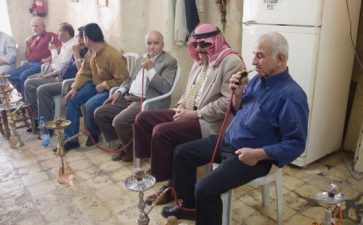![art.spinewalk.kaust[1]](https://www.greenprophet.com/wp-content/uploads/2009/10/art.spinewalk.kaust1_.jpg) The Kingdom of Saudi Arabia may still be considered as one of the most conservative from a religious standpoint. But with the opening of the new King Abdullah University of Science and Technology, otherwise known as KAUST, a new era in academic learning, combined with new innovations in ecological architecture and design, has begun in which both men and women students will benefit jointly.
The Kingdom of Saudi Arabia may still be considered as one of the most conservative from a religious standpoint. But with the opening of the new King Abdullah University of Science and Technology, otherwise known as KAUST, a new era in academic learning, combined with new innovations in ecological architecture and design, has begun in which both men and women students will benefit jointly.
The new campus opened its doors in September, in the Red Sea city of Thuwal, 80 km north of Jeddah. It is considered to be the most environmentally innovative campus of its kind in the Kingdom. Constructed in a manner to utilize the maximum benefit of sea breezes for cooling, the buildings themselves have been constructed in order to screen out a good deal of the heat that is generated by the hot Arabian sun; making the internal environment more sustainable for the students.
Built close together, the buildings themselves are designed to shade each other, making the internal temperatures much cooler.
From an academic standpoint, the university will offer degrees in 11 fields of study, including Environmental Science and Energy Development, Biosciences and Bioengineering, Industrial and Chemical Engineering, Applied Mathematics, and Computer Science. One of the most innovative aspects to the new KAUST campus, for Saudi Arabia anyway, is that both male and female students will study together in the same classrooms; something that has not been common in other Saudi campuses.
Mr. Bill Odell, of HOK Architects, and one of the two principal designers of the project, noted that the design of the campus, in which the buildings were built close together to provide natural shading for each other, was taken from traditional forms of Middle Eastern architecture in which buildings are built close together to lessen the heat of the sun’s rays.
This concept, together with using modern concepts of air conditioning, as well as utilizing the effect of the Red Sea breezes, will make the climatic environment within more comfortable while reducing energy costs.
Building designs from universities all over the world were studied, especially ones in hot climates, in order to find the right kind of architectural “model” that will accommodate the students in both classroom and research environments, as well as in residential ones. Each building incorporates a “solar tower” (another “innovation” used in early Islamic architecture) that heats the air, causing it to rise and pull in the sea breezes from the outside.
The residential part of the campus provides environmentally friendly living accommodations for both students and faculty members, and includes plenty of green spaces, shopping, health and recreational facilities. Special electric shuttle buses and other vehicles, including golf carts and two wheeled “Segways” will ferry students and instructors to and from classroom and residential facilities.
Being situated in a country where Wahhabi fundamentalist Islam is a way of life, women students still have adhere to all aspects of attire and other requirements for living in the Kingdom, even while being on campus. But being able to study and conduct research together with male students is at least a small beginning in a country where women are usually completely separated from men; even in an academic study environment.
We suppose it will be interesting to see a woman student, dressed in full Wahhabi dress, tooling along on her Segway on the way to class.
Read more on greening Islam:
Are Muslim Women Ready For Bamboo Hijab?
Jordan Bankrolls Cheap Vegetables for Ramadan
Chicago Muslims Launch Green Ramadan



Hi T.D.,
Since you appear to be a student at this university, we really appreciate your comments; especially in regards to the dress code for women students (and faculty members) as well as for the “on the ground” environmental realities.
I admit I assumed a bit in regards to what women wear at KAUST (and at other academic institutions in the Kingdom for that matter.)
As for the electric vehicles, perhaps this will become a reality in the next few years, and the university can be a leader in a new environmental direction for such projects.
As for damage caused to coral reefs and mangrove swamps, look what has happened in places like Dubai on the Persian Gulf – especially regarding a project known as The World.
Best,
Maurice
We suppose it will be interesting to see a woman student, dressed in full Wahhabi dress, tooling along on her Segway on the way to class.
It will be interesting to know if they will benefit from the cool air… under their Wahhabi dress!!!!!
I am curious about the height of these buildings. In the southern part of the (Georgia) USA there is an interest in a tree-line limit to buildings. The extra height requires more air conditioning on even warm days, and the tree canopy reduces that as well as physical glare from those driving by. We do not get particularly cold in winter, but when we do go cool, the trees also act as a wind break.
With Saudi temps maybe you don’t even have enough trees to make those ideas work though.
First off, the thing about women’s dress code is incorrect. On campus women can wear whatever they want. Many of the Saudi students continue to wear their abbayas by choice, but foreign women students wear all matter of attire.
Second, the segways are used by campus security forces. I don’t know of any students or instructors using them, though many use bicycles for the same purpose. On campus buses are currently gas powered like everything else, so I don’t know if the electric bus idea was just part of the architectural firm’s “green” pitch, or if the university will later transition to electric buses.
Third, the buildings may have been designed by HOK to be eco-friendly, but the campus (and Saudi Arabia as a whole) has a long way to go in terms of basic environmental friendliness.
Ignoring the problem of the damage to the coastline and the mangroves and reefs caused by the construction of the campus, there is tremendous waste in air conditioning resources, lack of recycling in buildings, and excessive use of consumables. For example, in the cafeteria we go through thousands of 1/3 L plastic water bottles daily instead of having a water dispenser.
Many of these problems can be attributed to growing pains of a young university, where many services may not be setup yet, but I suspect some things will take a long time to rectify going against a Saudi mindset that is generally wasteful and not conservation focused.